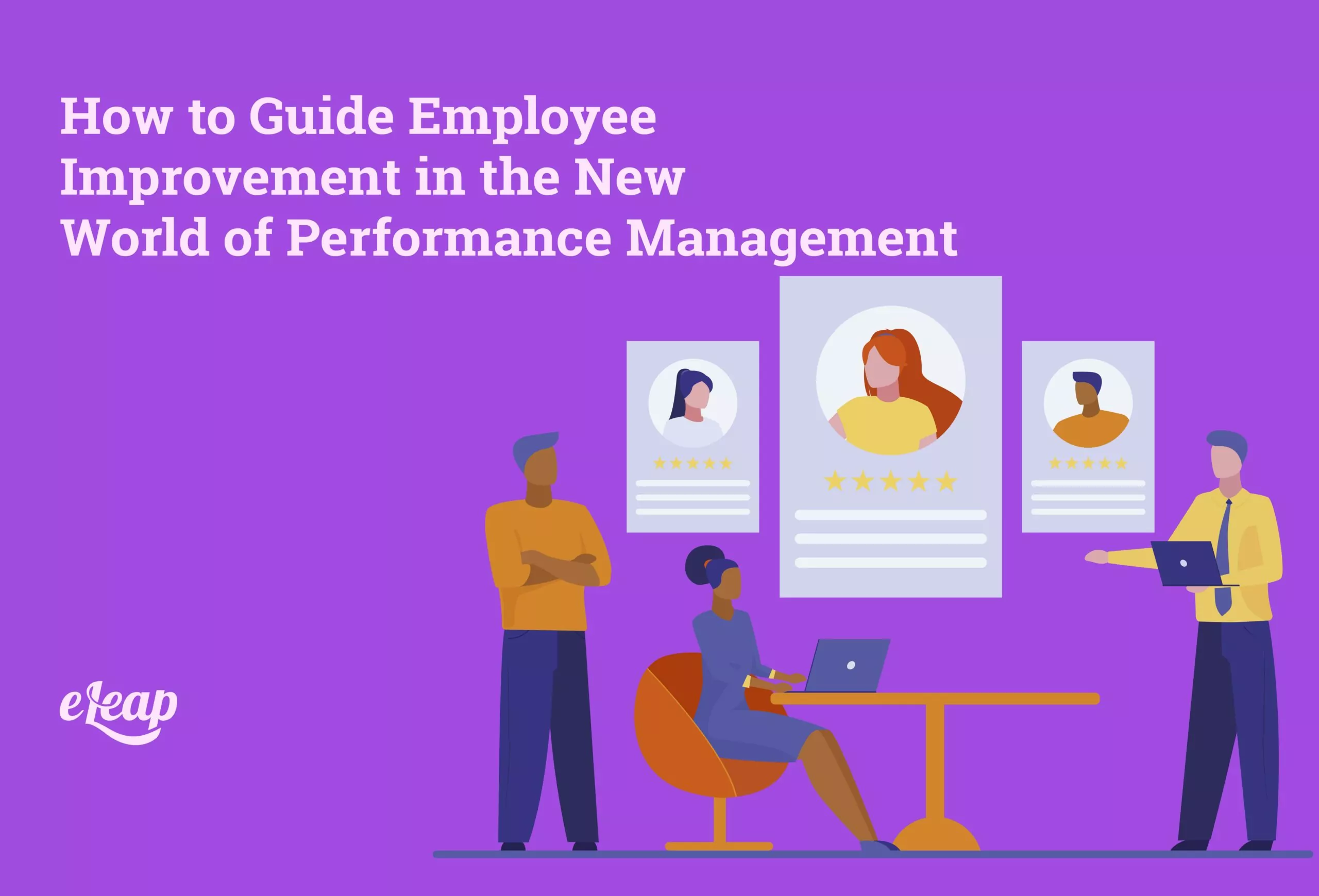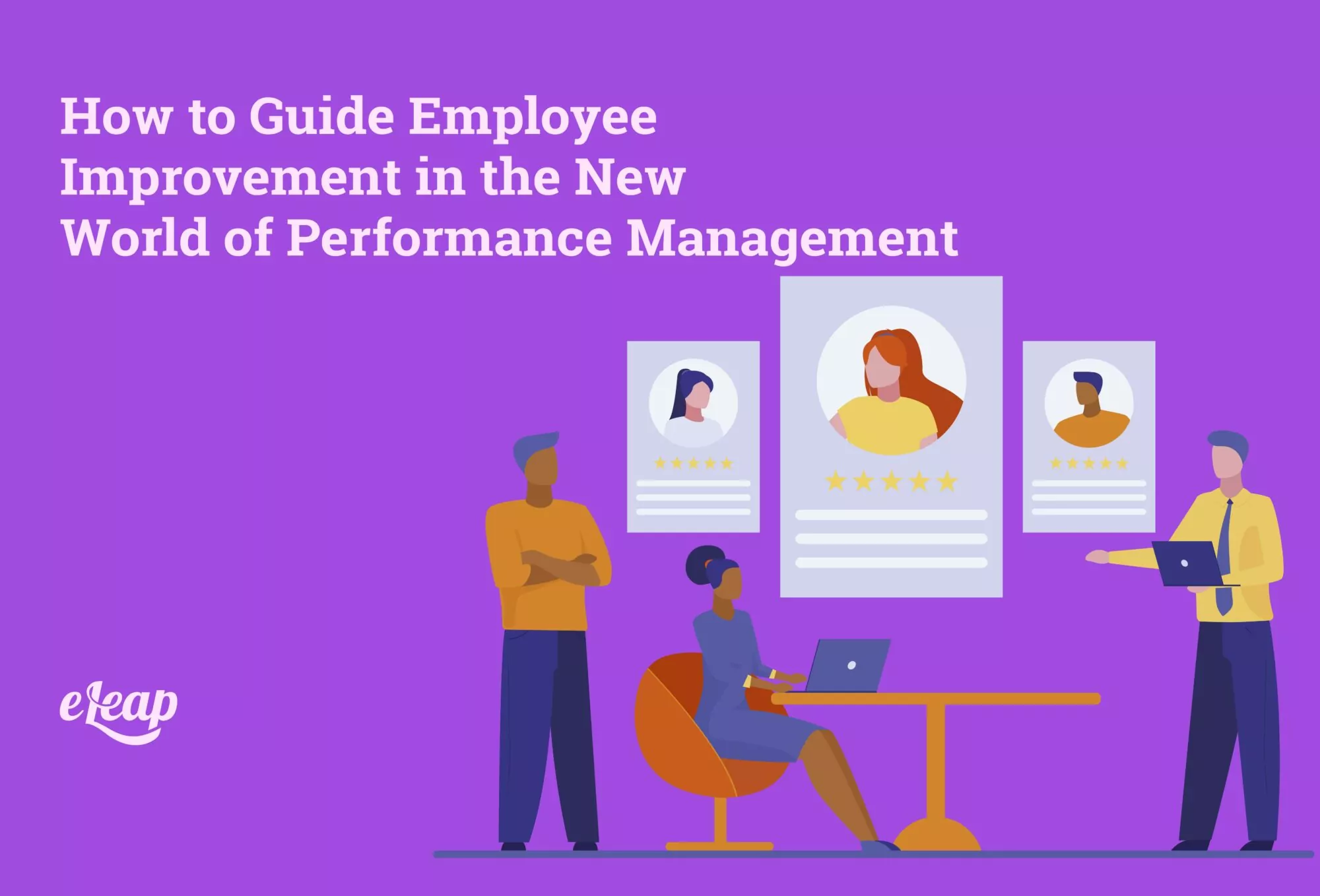How to Guide Employee Improvement in the New World of Performance Management

You have heard that in this new world of performance management, you must take a different approach to guiding improvement. However, chances are good that you have heard precious little about how to do that. A lot has been said about the death of annual performance reviews and the need for regular check-ins and one-on-ones. How should managers approach the delicate issue of performance improvement, though? We will address that question and several other key challenges managers face in today’s workplace within this post.

Use Your Opportunities to Broach the Subject
First and foremost, you must make the employee aware that an opportunity for improvement exists. Use an existing one-on-one to do this. Why not use a check-in instead? Often, check-ins are simply too brief to provide enough opportunity for you and the employee to discuss the situation in a supportive, constructive manner.
Simply stating the fact that improvement is needed and then demanding that they make changes will do little to foster true change. Instead, it creates resentment and causes a disconnect. While the employee might make some improvement-focused changes, they will be halfhearted and for the wrong reasons.
With a one-on-one, you should have enough time to cover the situation, allow the employee to ask questions or explain the situation, and to cover additional information if necessary. One-on-ones are often flexible, so you can usually extend the session by a few minutes if necessary. Rushing through the process will not result in positive change. Set aside ample time to address the situation.
Use the Right Language
In addition to ensuring that you are setting aside ample time for the discussion, you also need to approach the situation in the right way. This means you must use the correct language – the words you choose can mean the difference between an employee feeling supported and being enthused about growth opportunities and getting angry or feeling resentment or someone feeling that they are being attacked.
So, what is the right language to use here? While you’re free to choose the words you use, make sure that your message follows these guidelines:
- Frame the issue as an opportunity, not a failure.
- Focus on using positive, constructive language. Do not threaten or “talk down” to the employee.
- Make sure the employee is clear on responsibilities and duties.
- Clarify duties/responsibilities if necessary.
- Ask what you can do to help support the employee in improving performance.
- Ask the employee if they have any feedback about the situation.
However, be prepared for your efforts here to fail to create lasting change. Yes, the employee will likely make an effort to live up to your expectations, but, often, underlying problems continue to wreak havoc here. In most cases, a formal performance improvement plan (PIP) is the way to go.
What’s a PIP?
A performance improvement plan, or PIP, is exactly what it sounds like. It is a living document that outlines several key areas and acts as a guide for the employee (and for the manager). Key components of a PIP include:
- The nature of the performance issue
- The ultimate goal of the improvement efforts
- The steps that will be taken to achieve the necessary improvement
How to Create a PIP
To create a performance improvement plan, you will need to sit down with the employee. The following questions will help ensure that they are fully on board with the plan and that everything is clear and well-understood:
- Do you understand specifically what area of performance must be improved? For the manager: Make sure to give examples and be as exact as possible.
- Do you understand the level of performance expected? Do you understand this must be consistent? For the manager: If it is not clear, lay these expectations out.
- Do you know what support/resources are available to help you maintain performance? For the manager: Explain or explore these resources and other support options if necessary.
- Do you understand how I will be giving you feedback? For the manager: If not, communicate your check-in/on-on-one process and how it will tie in with the PIP.
- Do you understand the consequences of not maintaining performance standards? For managers: Explain these if necessary.
- Do you have access to additional sources of information? For the manager: Make sure the employee knows where to find information, such as the LMS, mentors, etc.
Creating the PIP
The formal PIP can be relatively brief. It should look something like the following:
- Employee Name
- Employee Title
- Department/Role
- Date
- A description of the performance that requires improvement. This can take the form of a list, but make sure to tie goals and activities that will be necessary to achieve the required improvement and any skill development that might be required.
- Date When Improvement Is Due
- Results expected. This should be a list of specific results that the employee needs to achieve/you need to see.
- Progress Review Dates
- Signatures of the employee and the manager
As a note, while the information above is geared for a single individual, it can easily be tailored for an entire team, department, or other group. Simply replace the employee with the group members in the discussion above and follow the same steps. This can be a powerful way to enact group-wide improvement.
It is also important to understand that the PIP discussed above is not set in stone. It can be changed, modified, even extended. The point is to have a document that helps guide the employee’s efforts moving forward while also clarifying expectations and laying everything out for easier understanding.
Creating a Stronger Workforce
Ultimately, guiding employee performance improvements is an important step in creating a stronger, more resilient workforce. Combine performance improvement plans with employee-development initiatives, a robust learning management system, and a company culture that values growth and experimentation and you will be well on your way to creating an organization seen as an employer of note and that attracts (and retains) top talent.